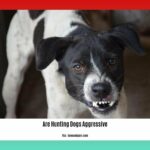Dobermans: elegant, intelligent, and often misunderstood. Whispers of their “bone-crushing” bite and the mythical “lock jaw” have fueled fear and misinformation. But what’s the truth behind the Doberman’s bite? This guide separates fact from fiction, debunking myths and providing a scientifically grounded understanding of Doberman bite force. We’ll dismantle the pervasive 600 PSI fallacy, explore the mechanics of their bite, and explain why responsible ownership, not bite strength, is the true measure of a Doberman’s power.
Debunking the 600 PSI Myth
The infamous 600 PSI figure—a number often cited as the Doberman’s bite force—is a myth. Its origins are murky, likely stemming from exaggerated anecdotes and misinterpretations. Like a game of telephone, the story has become distorted over time. Reputable sources and scientific studies paint a different picture. The actual bite force of a Doberman typically falls between 245 and 305 PSI, according to estimates from resources like Pawscessories.com. Still a powerful bite, but a far cry from the mythical 600 PSI. This places them within the mid-range of dog breeds, not at the top of the canine bite force chart.
Understanding the Doberman’s Bite: More Than Just Pressure
While 305 PSI represents a substantial force, bite force isn’t solely about pressure. Consider a surgeon’s scalpel—its effectiveness stems from precision and sharpness, not brute force. Similarly, the Doberman’s “scissor bite,” where the upper and lower teeth overlap like shears, maximizes cutting power even without extreme pressure. This efficient bite style, combined with strong jaw muscles, provides a tenacious grip.
Several factors influence a dog’s bite force:
- Individual Variation: Genetics, size, and even training can affect bite strength. Just like humans, some Dobermans will naturally be stronger than others.
- Age and Health: A senior Doberman or one with dental problems will likely have a weaker bite than a healthy adult.
- Situational Context: A playful nip during a game of fetch will exert far less force than a bite delivered in self-defense.
Putting the Bite in Perspective
So, how does the Doberman’s bite compare to other animals and breeds? A lion, the king of the jungle, boasts a bite force estimated around 1000 PSI. A wolf, a wild canine ancestor, comes in around 406 PSI. Even within the domestic dog world, breeds like the Kangal (743 Newtons, roughly equivalent to 757 pounds of force) and the Rottweiler (estimated at 328 PSI) exhibit greater bite force than the Doberman.
| Breed | Bite Force (PSI) |
|---|---|
| Rottweiler | 328 |
| German Shepherd | 238 |
| American Pit Bull Terrier | 235 |
| Doberman Pinscher | 245-305 |
| Labrador Retriever | 230 |
| Golden Retriever | 190 |
This table illustrates that bite force varies significantly between breeds. The Doberman, while possessing a strong bite, is not an outlier. Remember, these numbers are estimates, and individual dog variation always plays a role. Ongoing research continues to refine our understanding of bite force measurement and the factors that influence it.
The “Lock Jaw” Myth
The notion of a Doberman having a “lock jaw” is pure myth. No dog breed possesses a jaw that physically locks. The Doberman’s strong bite, combined with their scissor-like jaw action, may feel like a lock, but it’s simply a tenacious grip due to strong jaw muscles. There is no anatomical mechanism that locks their jaws in place.
Responsible Ownership: The True Measure of Power
The Doberman’s history as a guard dog has contributed to perceptions of aggression. While protective instincts remain, modern breeding practices prioritize temperament. However, responsible ownership is paramount. Like a powerful sports car, Dobermans require a skilled and responsible “driver.” This means:
- Early Socialization: Exposing Dobermans to various people, places, and situations from puppyhood helps them develop into well-adjusted adults, reducing fear-based aggression.
- Consistent Training: Obedience training provides control and teaches essential commands. Crucially, bite inhibition training teaches a Doberman to control the force of their bite, minimizing the risk of injury even during play.
- Understanding Dog Behavior: Learning to recognize signs of stress or anxiety in your dog can prevent situations that might escalate to a bite.
Dispelling the “Aggressive Breed” Myth
There is no official “aggressive breed” list. Any dog, regardless of breed, can display aggression if not properly raised and trained. The Doberman’s strength and protective instincts make training and socialization not just recommended, but essential. Focusing on responsible ownership rather than breed-specific stereotypes is key to preventing dog bites.
Beyond the Myths: The Doberman’s True Nature
With proper training and socialization, Dobermans are intelligent, loyal, and affectionate companions. Understanding their bite force, not fearing it, empowers owners to provide the guidance necessary for a safe and fulfilling relationship. Let’s move past the myths and appreciate the Doberman for the intelligent, loyal companion they can be.
Discover the surprising resilience of your betta friend and learn how long can a betta fish survive without food when life gets in the way. Banish those pesky critters and discover effective strategies on how to keep maggots out of trash can for a cleaner, fresher kitchen.
- Red Cloud, NE: Discover Willa Cather’s Legacy - April 11, 2025
- Remember Old Social Media Sites? Their Rise and Fall - April 11, 2025
- How many days till Feb 3?Accurate Countdowns & Tools - April 11, 2025
















